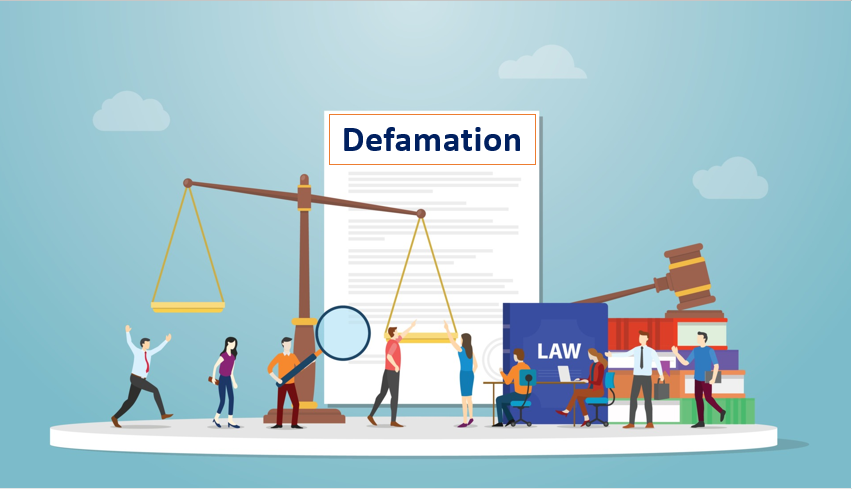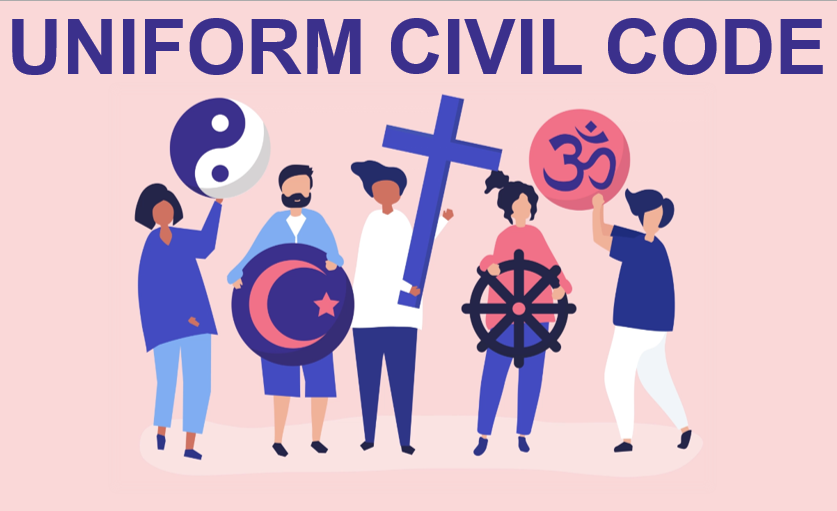Published on 27th April 2025
Authored By: Riya Dama
Jitendra Chauhan College of Law
ABSTRACT
When utilized appropriately, defamation laws aim to safeguard individuals against false claims that could damage their reputations. However, both civil and criminal defamation laws can also be exploited to stifle open public discussion. India has witnessed a surge in defamation lawsuits, which many argue indicates such misuse. In addition to the lawsuits, journalists in India have reported a growing number of legal notices from corporations threatening legal action to intimidate or harass them. It is disheartening to observe that in India, where Goddess Sita is revered as an emblem of purity and grace, her honour has been questioned repeatedly.
INTRODUCTION
The revered Bhagavad Gita insightfully notes that “For a person of principle, slander is more terrifying than death.” This idea is still relevant in contemporary society, where an individual’s reputation is regarded as one of their most valued possessions. A person’s reputation influences not only themselves but also their family and loved ones.
The importance of social reputation has been ingrained in our culture since ancient times. As an Indian, I can attest that having a good reputation is of great significance in our society, as illustrated by the adage “Ijjat hai toh sab hai,” meaning “Reputation is everything.” Despite considerable progress and transformations over the years, the value of reputation has remained consistent.
In accordance with Indian law, a complainant can choose to file defamation claims as either a criminal offense or a civil wrongdoing. Civil liability, which is governed by tort law, draws on principles from English law, while criminal liability is specified in sections 499 and 500 of the Indian Penal Code (IPC). Both types of claims can be pursued at the same time. A civil case can continue even if a criminal defamation charge fails, and the same holds true in reverse.
Although it is not formally recognized, defamation has always existed in society. The roots of defamation laws in India trace back to the 19th century, particularly when Lord Macaulay introduced them in 1837. Ironically, these laws were primarily established by the British to safeguard their own interests. Article 21 of the Indian Constitution, which is part of fundamental rights, ensures an individual’s right to live with dignity, which includes the safeguarding of their reputation and respect. Additionally, Article 19 of the Indian Constitution grants citizens of India the freedom of speech. However, this right is not absolute, as Article 19(2) allows the government to impose “reasonable restrictions,” which encompass defamation laws in India.
CIVIL DEFAMATION UNDER INDIAN LAW
In contrast to criminal defamation, which is established by legislation, civil defamation consists of a collection of tort law principles that have mainly evolved through rulings made by judges in specific cases.
- According to Indian law, defamation can be classified as either a civil wrong or a criminal act.
- Civil defamation can manifest as libel (written) or slander (verbal) and is rooted in tort law, which imposes civil liabilities.
It can result in financial restitution, and the calculation of damages is based on likelihood.
CRIMINAL DEFAMATION UNDER INDIAN LAW
In situations involving criminal defamation, it is essential to prove the claims without reasonable doubt. As outlined in Section 499 of the Indian Penal Code (criminal defamation), it specifies:
- “Any individual who, through spoken words, signs, or visible representations, creates or circulates any statements about another person intending to damage that person’s reputation is committing defamation.”
- The offense of defamation may lead to a maximum prison sentence of two years, which can include a monetary penalty (Section 500 IPC).
- This crime consists of three crucial elements:
(1) Creating or circulating any statements concerning an individual,
(2) these statements must be delivered verbally or in a written form, or through signs or visible representations, and
(3) the action must have been carried out with intent or with the awareness or reasonable belief that it would harm the reputation of the individual in question.
The burden of proof for each of these elements lies with the prosecution, which must demonstrate them “beyond a reasonable doubt,” the standard used in the majority of criminal cases.
CYBER DEFAMATION UNDER INDIAN LAW
In cyber-related cases, defamation occurs through the dissemination of false information via computers or the Internet. The harm inflicted on an individual by posting a defamatory remark on a website is irreversible, as the content is accessible to everyone. To establish a publication, a defamatory claim must be communicated to at least one individual. Each time a false statement is altered and posted through a different IP address; it complicates the process of identifying the perpetrator. In India, there is a clear ban on cyber defamation following the recent amendments to the Information Technology Act, of 2000. Section 66A of this Act prohibits the transmission of anything that is insulting or threatening through a computer or communication device. Additionally, the Indian government introduced a National Cyber Security Policy in 2013.
DECRIMINALIZING OF DEFAMATION
The de minimis principle, commonly known as minimalism, asserts that criminal penalties should be a final recourse, only implemented after all other options have been exhausted. This principle emphasizes that criminal defamation should not be pursued if there are less intrusive remedies available. In this scenario, the defendant is engaged in a defamation dispute and looks for a resolution through tort law that effectively protects the interests of both parties. It is not necessary to label defamation as a criminal offense when the victim can receive either financial compensation or a public apology to repair the damage done to their reputation. Furthermore, even after completing a sentence, the accused should not carry the stigma of being labeled a criminal in their community. Recently, there has been a worldwide movement toward the decriminalization of defamation; however, Indian law offers a unique viewpoint on this issue. International organizations, such as the United Nations Special Rapporteur on Freedom of Opinion and Expression, have called on nations to substitute criminal defamation laws with more efficient civil law. The United Kingdom, which is the founding country of the International Criminal Court, removed the criminal classification from its defamation laws in 2013 and replaced it with a more sensible legal framework. In contrast, the Indian legal system continues to depend on both civil and criminal remedies for defamation, which has not resulted in justice for those who have suffered defamation. India should move towards aligning itself with the global trend and strive for similar progress.
GLOBAL VIEW
As the use of social media continues to grow, numerous nations are establishing more stringent defamation laws. In Australia and New Zealand, however, defamation is regarded as a civil issue. New Zealand eliminated criminal defamation in 1993. In 2022, Japan introduced tougher consequences for criminal defamation, increasing the punishment from short detention and fines under 10,000 yen to a possible one-year prison term, which may include forced labor and fines reaching up to 300,000 yen. Given that courts generally award higher damages in criminal defamation cases in comparison to civil ones, such cases are more commonly pursued.
RECENT NEWS
- The Supreme Court has prevented a trial court from advancing a defamation case against the Chief Minister of Delhi for retweeting a YouTube video that criticized the BJP’s IT cell. The Supreme Court was reviewing the Delhi Chief Minister’s appeal against a decision made by the Delhi High Court, which had upheld the summons issued to him in a criminal defamation matter for sharing a video alleged to be defamatory, originally posted by a YouTuber in 2018. The High Court observed that –
- Sharing content that is claimed to be defamatory through a Twitter account and presenting it as one’s personal opinion could, at first glance, lead to liability under Section 499 of the IPC.
- The significant social media following of a Chief Minister suggests a larger audience, which makes any retweet appear as a public endorsement or acknowledgment.
- The Supreme Court stressed that retweeting does not inherently imply endorsement.
- In a defamation case involving renowned lyricist Javed Akhtar and Bollywood actress Kangana Ranaut, Akhtar filed a complaint against Ranaut in 2020, asserting that she damaged his ‘flawless reputation’ by mentioning his name during a discussion about actor Sushant Singh Rajput’s death in an interview. In response, Ranaut submitted a counter-complaint against Akhtar, alleging that he had committed criminal intimidation and disrespected her dignity. On February 28, 2025, the matter was resolved when the actress indicated that her remarks about Akhtar stemmed from a misunderstanding and conveyed her regret for any distress caused to him as a consequence.
THE SC VERDICTS ON DEFAMATION AND THE RIGHT TO FREE SPEECH
In the 2016 case of Subramanian Swamy vs. Union of India, the Supreme Court affirmed the constitutionality of Sections 499 and 500 of the Indian Penal Code. It determined that –
- The right to preserve a positive reputation is safeguarded by Article 21 (Protection of life and personal liberty) of the Constitution,
- And that criminal defamation constitutes a valid restriction on the right to freedom of speech.
- Although Article 19(1)(a) of the Constitution grants the right to speech and expression, Article 19(2) permits the government to impose “reasonable restrictions” on this right for
- The sovereignty and integrity of India,
- National security,
- Maintaining friendly relations with foreign nations,
- Public order, decency, or morality, or regarding contempt of court, defamation, or incitement to commit an offense.
- In the case of Kaushal Kishore vs Union of India (2017), the Supreme Court determined that no further limitations can be placed on free speech beyond those outlined in Article 19(2).
- In Shreya Singhal vs. Union of India (2015), the Supreme Court annulled Section 66A of the IT Act 2000, which had made it a crime to send “offensive messages” via “a computer resource or a communication device.” This provision was invalidated due to:
- The vagueness surrounding the definition of the term “offensive,” and
- The ruling that it violated Article 19(1)(a) and was not justified under Article 19(2).
- In the case of Chamanlal vs. the State of Punjab (1970), the president of a municipal corporation sent a letter that slandered a nurse at a local hospital. Consequently, a complaint was lodged under Section 499. The Supreme Court ruled that the protection of the individual’s reputation must be grounded in good faith.
CONCLUSION
William Shakespeare once remarked, “A good reputation in men and women, my lord, is the most valuable treasure of their souls.”
The safeguarding of reputation, which acts as a vital driver for human conduct, must be upheld and maintained. Every person has the right to live with honour, as promised under Article 21 of the Indian Constitution, and for one to live with honour, their reputation must remain unblemished. Given that reputation is a significant asset for every individual, it is crucial to protect it.
Recently, India has seen the emergence of stand-up comedy, where frequently offensive and defamatory statements are made under the guise of humour and free speech, ignoring the boundaries set by rational restrictions. One comedian, Kunal Kamra, is facing contempt of court charges due to his comments aimed at the Hon’ble Supreme Court. Although freedom of speech and expression grants every citizen the right to express their views, this right comes with specific constraints; laws exist to defend individual dignity and maintain public order. It is not solely the government’s role to regulate speech; it is also the responsibility of each person to exercise their right to free speech respectfully.
REFERENCES
(Ravi, 2024) , (Manupatra) , (Banerji, 2022)


